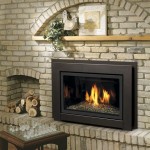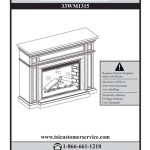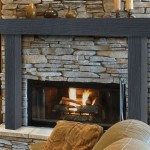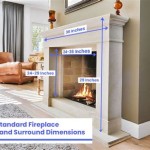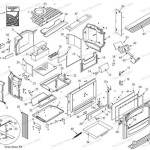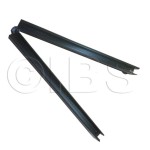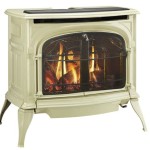Wood to Gas Fireplace Conversions: A Comprehensive Guide
Converting a wood-burning fireplace to gas offers a blend of convenience and efficiency that appeals to many homeowners. While the traditional charm of a crackling wood fire holds a certain allure, the practical advantages of gas, such as ease of use, consistent heat output, and reduced maintenance, often outweigh the nostalgic appeal. This article provides a detailed overview of the wood-to-gas fireplace conversion process, covering essential considerations, installation procedures, and the various options available to achieve a safe and aesthetically pleasing outcome.
Before embarking on a wood-to-gas conversion, it's crucial to understand the existing fireplace structure and its compatibility with a gas system. Not all fireplaces are suitable for conversion, and improper installation can lead to dangerous carbon monoxide leaks or fires. A thorough inspection by a qualified professional is the first and most important step. This inspection will evaluate the chimney's integrity, assess the firebox dimensions, and determine the feasibility of running a gas line to the fireplace.
The fireplace chimney plays a critical role in venting combustion gases. Wood-burning fireplaces produce significantly more creosote, a flammable byproduct of wood combustion, than gas fireplaces. Over time, creosote can accumulate in the chimney, posing a serious fire hazard. When converting to gas, it's essential to have the chimney professionally cleaned and inspected for any structural damage. In some cases, a chimney liner may be required to ensure proper venting and prevent corrosion from the acidic byproducts of gas combustion.
The size of the firebox is another important factor to consider. Gas fireplace inserts are designed to fit within specific firebox dimensions. If the existing firebox is too small, it may be necessary to modify the fireplace opening or choose a smaller insert model. On the other hand, if the firebox is too large, the gas insert may not provide sufficient heat output to effectively warm the room.
Finally, the availability of a gas line is essential for the conversion. If a gas line is not already present near the fireplace, it will need to be installed. This process typically involves running a gas line from the main gas meter to the fireplace location. A qualified plumber or gas fitter should perform this task, ensuring that all gas line connections are properly sealed and comply with local building codes.
Key Point 1: Assessing Compatibility and Safety
The initial assessment of the existing fireplace is paramount for a successful and safe conversion. This evaluation involves scrutinizing several crucial aspects, including the chimney's condition, firebox dimensions, and the feasibility of establishing a gas supply. A certified professional, such as a chimney sweep and a licensed gas technician, should conduct these inspections to ensure accuracy and adherence to safety regulations.
The chimney's integrity is a top priority. A structurally sound chimney is essential for safely venting combustion gases. Cracks, leaks, or deterioration in the chimney can compromise its ability to function properly, potentially leading to carbon monoxide leaks into the home. A chimney sweep will inspect the chimney for any signs of damage and clean it thoroughly to remove any accumulated creosote. If the chimney is deemed unsuitable for gas appliance use, a flue liner, typically made of stainless steel, may be recommended to create a dedicated, sealed pathway for the gas combustion products.
Firebox size is another critical consideration. The dimensions of the firebox will determine the types and sizes of gas appliances that can be installed. Measuring the firebox's width, height, and depth accurately is essential for selecting a gas insert or log set that fits properly. Choosing an appliance that is too large for the firebox can create safety hazards, while selecting one that is too small may not provide adequate heating.
Gas line accessibility and installation are the final components of the compatibility assessment. If a gas line is not readily available near the fireplace, a new line must be run from the main gas meter. This process requires careful planning and execution to ensure that the gas line is properly sized, installed, and sealed. A licensed gas technician will determine the appropriate gas line size based on the BTU requirements of the gas appliance and the distance from the meter. They will also ensure that all gas line connections are made using approved fittings and that the line is pressure-tested to verify its integrity.
Failing to adequately assess these compatibility factors can have severe consequences, including gas leaks, carbon monoxide poisoning, or fires. Therefore, engaging qualified professionals to conduct thorough inspections is a non-negotiable step in the wood-to-gas fireplace conversion process.
Key Point 2: Choosing the Right Gas Fireplace Option
After assessing the suitability of the existing fireplace, the next step is to select the appropriate gas fireplace option. Several choices are available, each with its own set of advantages and disadvantages. These options include gas fireplace inserts, gas log sets, and direct vent fireplaces. The best choice for a particular homeowner will depend on factors such as budget, heating needs, and aesthetic preferences.
Gas fireplace inserts are self-contained units that are designed to fit directly into the existing fireplace opening. They typically offer higher heating efficiency than gas log sets and come in a variety of styles and finishes. Gas inserts are often equipped with blowers that circulate warm air into the room, providing consistent and comfortable heating. They also offer more precise control over the flame height and heat output, allowing homeowners to adjust the fireplace to their specific needs.
Gas log sets are a more affordable option that can be easily installed in most existing fireplaces. These sets consist of ceramic logs that are arranged over a gas burner. Gas log sets provide a realistic flame appearance but typically offer lower heating efficiency than gas inserts. They also tend to radiate heat primarily from the front of the fireplace, which can lead to uneven heating in the room.
Direct vent fireplaces are sealed combustion units that draw air from outside the home and vent combustion gases directly outside through a dedicated venting system. Direct vent fireplaces offer excellent heating efficiency and safety. They also eliminate the need for a traditional chimney, making them a versatile option for homes that lack a chimney or have a damaged chimney.
When choosing a gas fireplace option, it's essential to consider the BTU output, heating efficiency, and venting requirements. BTU output refers to the amount of heat the fireplace can produce. The appropriate BTU output will depend on the size of the room and the desired heating level. Heating efficiency refers to the percentage of heat that is actually transferred into the room. Higher efficiency ratings translate to lower energy bills. Venting requirements will depend on the type of gas fireplace chosen and the existing chimney configuration. Direct vent fireplaces require a dedicated venting system, while gas inserts and log sets may be able to utilize the existing chimney, provided it meets certain requirements.
Careful consideration of these factors will ensure that the selected gas fireplace option meets the homeowner's heating needs, aesthetic preferences, and safety requirements.
Key Point 3: Installation Process and Safety Precautions
The installation of a gas fireplace is a critical process that must be performed by a qualified professional. Improper installation can lead to serious safety hazards, including gas leaks, carbon monoxide poisoning, or fires. It is essential to hire a licensed gas fitter or HVAC technician with experience in gas fireplace installations to ensure that the job is done correctly and safely.
The installation process typically involves several steps, including preparing the fireplace opening, connecting the gas line, installing the gas appliance, and testing the system. Before beginning the installation, the professional will thoroughly inspect the existing fireplace to ensure that it meets all safety requirements. They will also ensure that the gas line is properly sized and pressure-tested to prevent leaks.
Preparing the fireplace opening may involve cleaning the firebox, removing any debris, and ensuring that the opening is properly sealed. The gas line connection must be made using approved fittings and sealed with pipe dope to prevent leaks. The gas appliance will then be carefully installed according to the manufacturer's instructions. This typically involves securing the appliance in place, connecting the gas line, and connecting the venting system.
Once the installation is complete, the professional will conduct a series of tests to ensure that the system is functioning properly and safely. These tests may include a gas leak test, a carbon monoxide test, and a venting test. The gas leak test will verify that there are no leaks in the gas line connections. The carbon monoxide test will ensure that the fireplace is venting properly and that no carbon monoxide is leaking into the home. The venting test will verify that the venting system is functioning correctly and that combustion gases are being safely exhausted outside.
In addition to professional installation, homeowners should also take certain safety precautions to ensure the safe operation of their gas fireplace. These precautions include having the fireplace inspected and serviced annually by a qualified professional, installing carbon monoxide detectors in the home, and never storing flammable materials near the fireplace. Regular maintenance and adherence to safety guidelines will help to prevent accidents and ensure the long-term safe operation of the gas fireplace.
Proper installation and adherence to safety precautions are paramount for ensuring a safe and enjoyable experience with a gas fireplace. Hiring a qualified professional and following recommended safety guidelines will help to minimize the risk of accidents and ensure the long-term reliability of the gas fireplace system.
Finally, ensuring that the conversion adheres to all local building codes and regulations is vital. These codes are in place to protect homeowners and ensure the safety of gas appliances. A qualified installer will be familiar with these codes and can ensure that the conversion meets all necessary requirements.

Can A Wood Burning Fireplace Be Converted To Gas The Flame Company

Gas To Wood Fireplace Conversion Overland Park Ks Firplace Service

Wood Fireplaces Gas Conversion That Counts

Wood Burner Conversion New Jersey Fireplaces Kjb

Convert From Wood To Gas With A Insert The Kernel Burner

Wood To Gas Fireplace Conversion In Wisconsin Free Quote Badgerland Waesha

Converting Wood Fireplace To Gas Valparaiso In Northwest Chimney

What S The Cost To Convert A Wood Fireplace Gas Orange County Register

Convert Your Wood Or Gas Fireplace Fuel Type Conversions

Convert To Gas Installing Fireplace Inserts Doctor Flue
Related Posts

